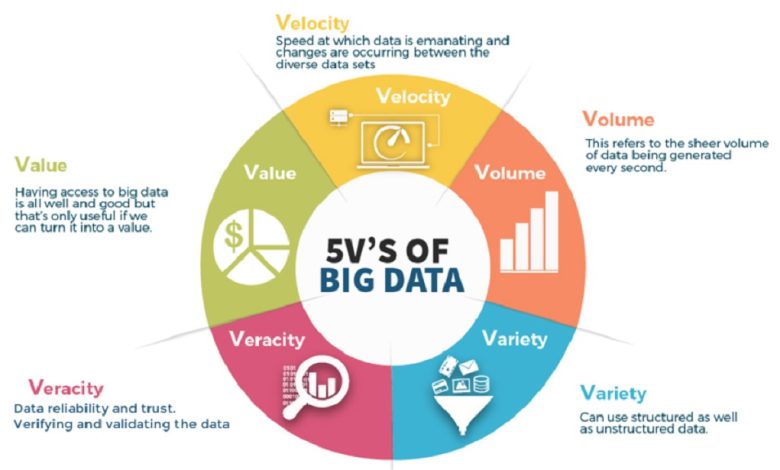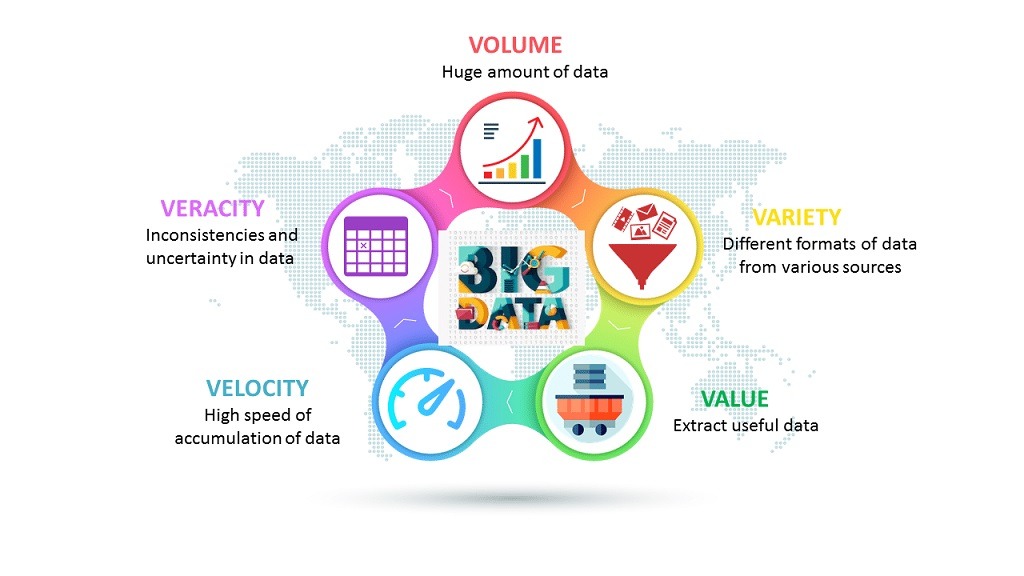Unlocking Healthcare Potential: The 5 V’s of Big Data

In today’s rapidly evolving healthcare landscape, the integration of big data has become a cornerstone for innovation and improved patient outcomes. Central to understanding this transformation are the five V’s of big data: Volume, Velocity, Variety, Veracity, and Value. Each dimension plays a pivotal role in harnessing data’s full potential within the healthcare sector.
Volume: The Immense Scale of Healthcare Data
The term ‘Volume’ in big data refers to the vast amounts of information generated daily. In healthcare, this encompasses electronic health records (EHRs), medical imaging, genomic data, and data from wearable devices. The sheer scale is staggering. For instance, it’s estimated that the global healthcare data volume reached approximately 2,314 exabytes in 2020, with projections suggesting a continued exponential increase. Managing and analyzing this colossal volume is paramount for deriving actionable insights and enhancing patient care.
Velocity: The Rapid Generation and Processing of Data
‘Velocity’ pertains to the speed at which data is created, processed, and analyzed. In the medical field, real-time data acquisition is crucial. Continuous patient monitoring systems and wearable health devices generate streams of data that require immediate analysis. For example, real-time glucose monitoring devices for diabetic patients provide continuous data, enabling timely interventions and adjustments to treatment plans. The ability to swiftly process this data ensures that healthcare providers can make prompt, informed decisions, ultimately improving patient outcomes.
Variety: Diverse Data Types and Sources
The ‘Variety’ dimension highlights the diverse nature of data sources and formats in healthcare. Data can be structured, such as numerical readings from medical devices, or unstructured, like physician’s notes and medical images. This diversity presents both opportunities and challenges. Integrating data from disparate sources, such as EHRs, laboratory results, and patient-reported outcomes, can lead to a more comprehensive understanding of a patient’s health. However, it also necessitates sophisticated data management strategies to ensure seamless interoperability and meaningful analysis.
Veracity: Ensuring Data Accuracy and Reliability
‘Veracity’ addresses the trustworthiness and quality of data. In healthcare, decisions based on inaccurate or incomplete data can have serious consequences. For instance, a study highlighted that approximately 30% of the world’s data volume is generated by the healthcare industry, yet a significant portion of this data is unstructured and of varying quality. Ensuring data accuracy involves rigorous validation processes, standardization protocols, and continuous monitoring to maintain data integrity. High veracity is essential for reliable diagnostics, treatment planning, and policy-making.
Value: Deriving Meaningful Insights
The ultimate goal of big data in healthcare is to extract ‘Value’—transforming raw data into meaningful insights that drive better health outcomes. This involves advanced analytics, machine learning algorithms, and predictive modeling. For example, predictive analytics can forecast patient admission rates, enabling hospitals to optimize resource allocation. Additionally, big data analytics have been instrumental in accelerating drug discovery processes and personalizing treatment plans based on individual patient data. The value derived from big data not only enhances patient care but also contributes to operational efficiencies and cost reductions in healthcare systems.

Integrating the 5 V’s: A Holistic Approach
Effectively leveraging big data in healthcare requires a holistic approach that considers all five V’s. The interplay between these dimensions enables healthcare organizations to:
-
Enhance Patient Care: By analyzing large volumes of diverse data in real-time, providers can offer personalized treatments and proactive care.
-
Improve Operational Efficiency: Insights into patient flow and resource utilization help streamline operations and reduce costs.
-
Advance Medical Research: High-quality, varied datasets accelerate research in disease patterns, treatment efficacy, and public health trends.
-
Ensure Data Security and Compliance: Maintaining data veracity and value necessitates robust security measures and adherence to regulatory standards.
Challenges and Considerations
While the benefits are substantial, integrating big data into healthcare comes with challenges:
-
Data Privacy and Security: Protecting sensitive patient information from breaches is paramount. Implementing stringent security protocols and ensuring compliance with regulations like GDPR and HIPAA are essential steps.
-
Interoperability Issues: Diverse data formats and systems can hinder seamless data integration. Adopting standardized data formats and fostering collaboration among stakeholders can mitigate these challenges.
-
Data Quality Management: Continuous efforts are needed to maintain data accuracy and relevance. This includes regular audits, validation checks, and employing data cleansing techniques.
-
Ethical Implications: The use of big data must be guided by ethical considerations, ensuring patient consent and transparency in data usage.
Conclusion
The five V’s of big data—Volume, Velocity, Variety, Veracity, and Value—serve as a framework for understanding and harnessing the power of data in healthcare. By addressing each dimension thoughtfully, healthcare organizations can unlock transformative insights, improve patient outcomes, and drive innovation in medical research and practice.
FAQs
-
What are the 5 V’s of big data in healthcare?
- The 5 V’s are Volume, Velocity, Variety, Veracity, and Value. They represent the key characteristics of big data, focusing on the scale, speed, diversity, accuracy, and meaningful insights derived from data.
-
How does big data improve patient care?
- By analyzing large and diverse datasets in real-time, healthcare providers can offer personalized treatments, predict health trends, and make informed clinical decisions, leading to enhanced patient care.
-
What challenges exist in implementing big data in healthcare?
- Challenges include ensuring data privacy and security, achieving interoperability among diverse data systems, maintaining high data quality, and addressing ethical considerations in data usage.
-
Why is data veracity important in healthcare?
- Data veracity ensures the accuracy and reliability of health information. High-quality data is crucial for accurate diagnostics, effective treatment plans, and informed policy-making.
-
How can healthcare organizations derive value from big data?
- By employing advanced analytics and machine learning, organizations can transform raw data into actionable insights, improving patient outcomes, optimizing operations, and fostering medical research.
Read More: What Challenges Are There In Recruiting Healthcare Staff?

